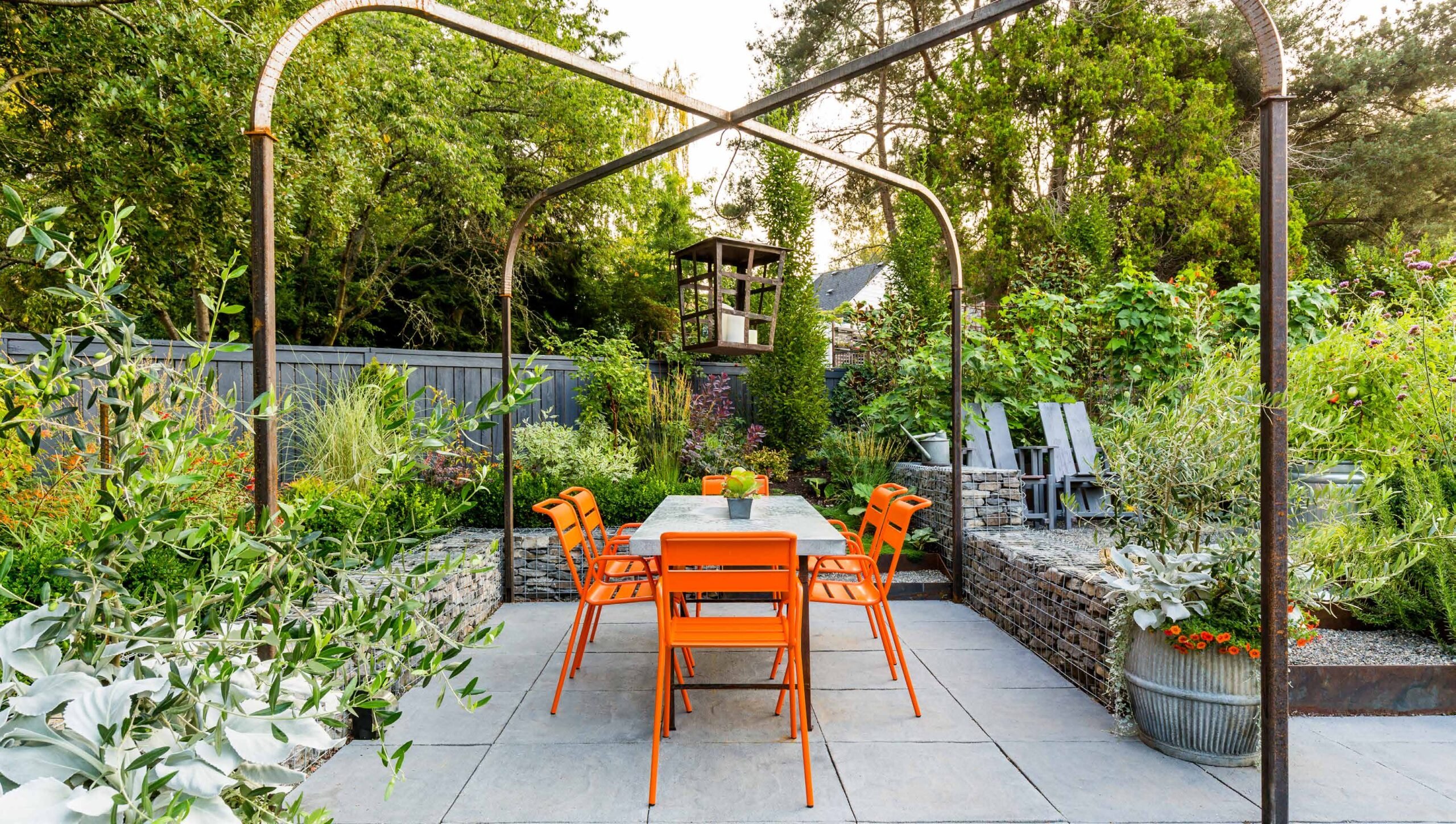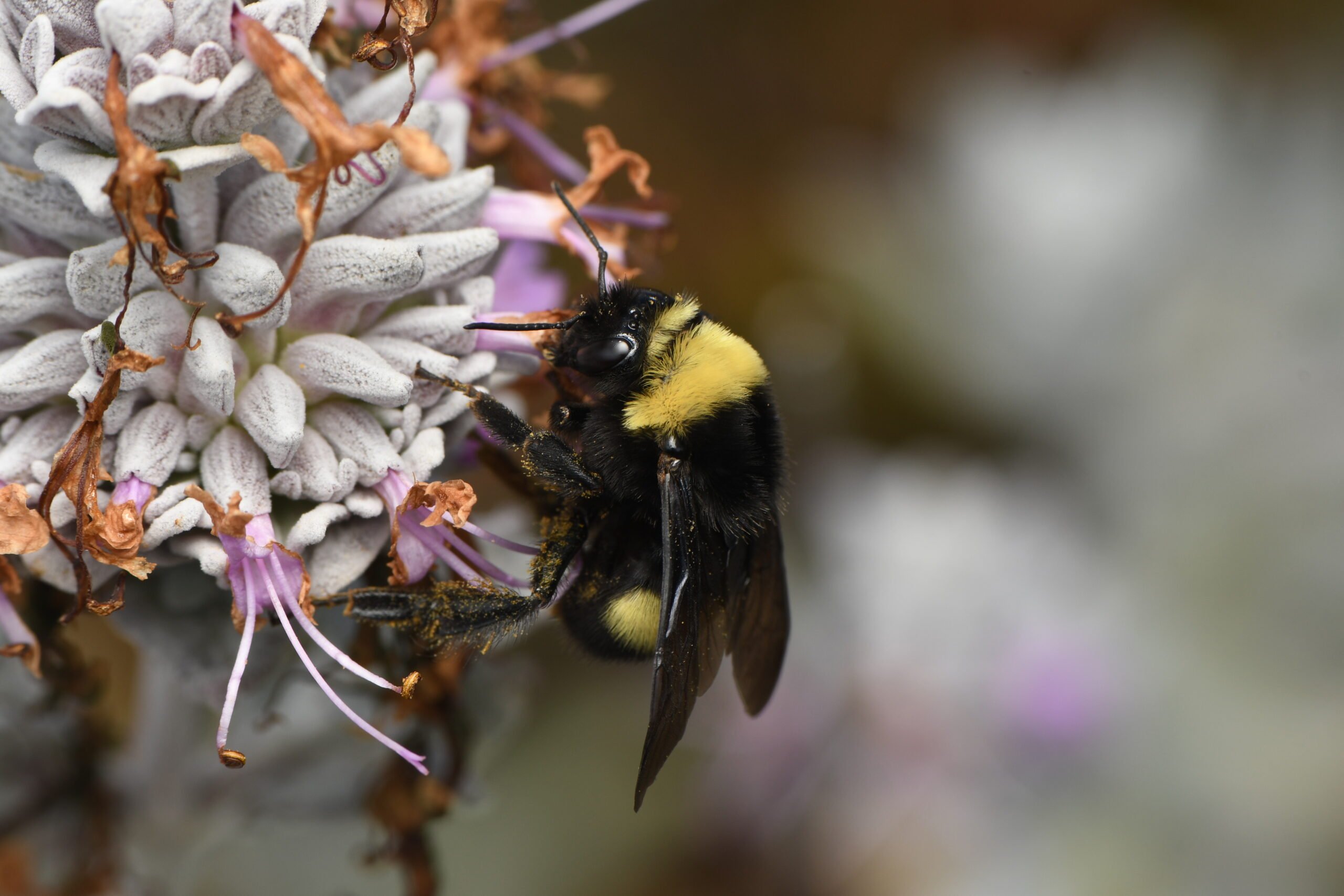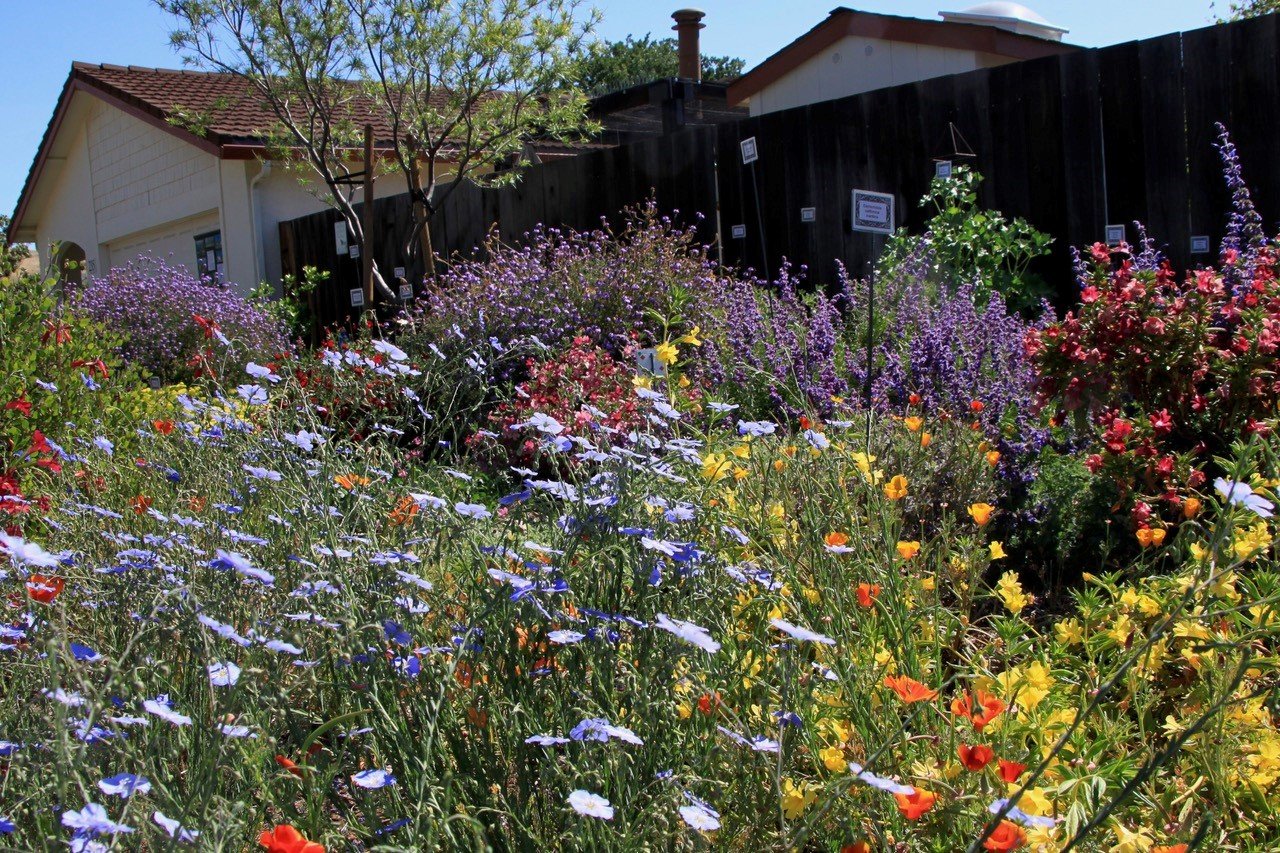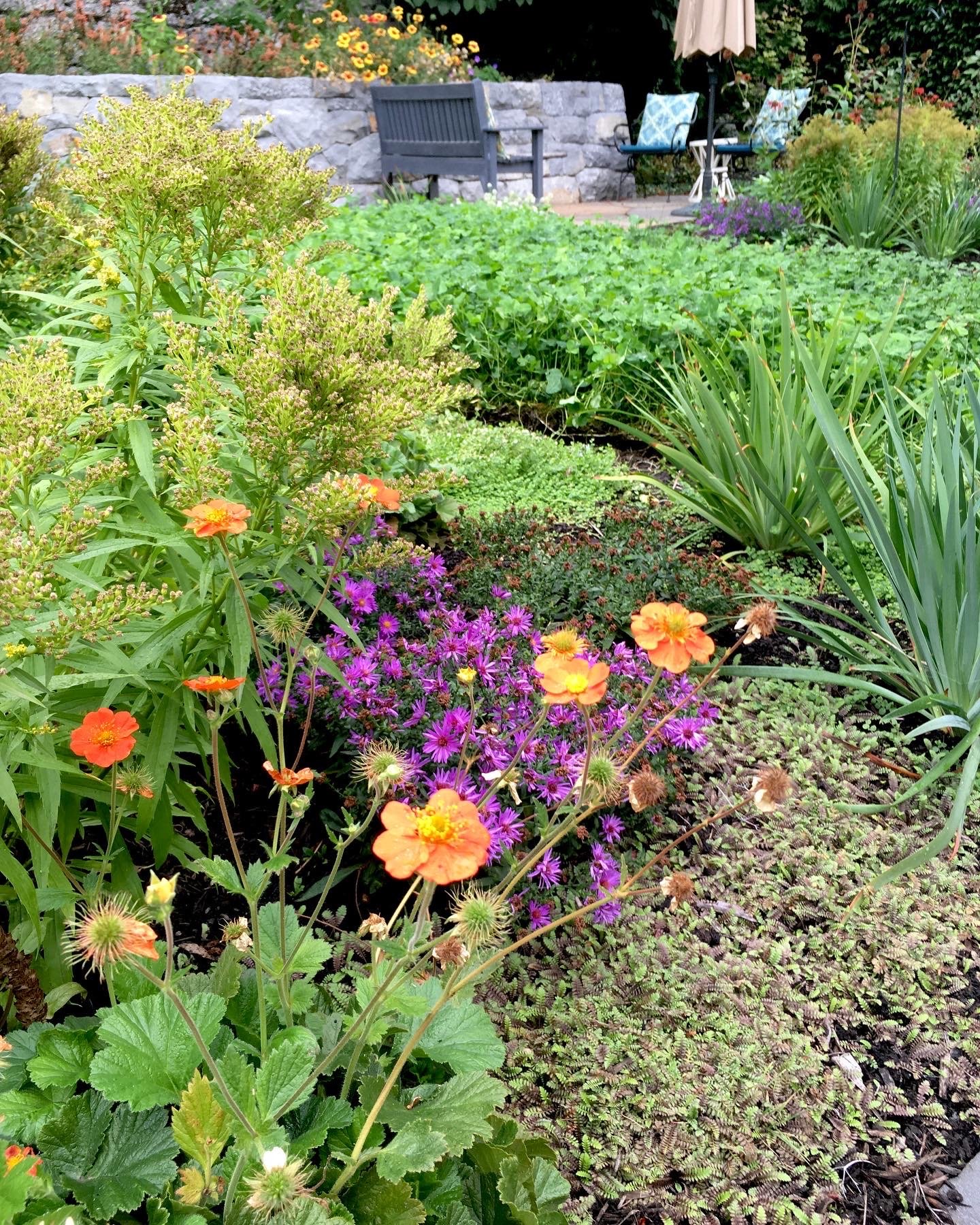
Botanic Gardens are Horticultural Innovators with Garden Futurist Ari Novy

Contributor
Winter 2022
Listen to the full Garden Futurist: Episode X podcast here.
Botanic gardens benefit home gardens, urban ecosystems, and scientific research—including plant conservation through tissue culture. In this interview with President and CEO of San Diego Botanic Garden, Dr. Ari Novy, Garden Futurist producers Sarah Beck and Adriana López-Villalobos discuss the roles botanic gardens play in science and communities.
Novy argues that one of the most innovative things about botanic gardens remains the incredible diversity of plants in one place. In addition to being centers for horticultural education, botanic gardens can use their living collections—often consisting of thousands of plants—to inform research and conservation. When botanic gardens collaborate with one another, through combined collections called metacollections, endangered species have more of a chance to thrive being kept safe in multiple collections.
“Botanic gardens are adapting to the pressing roles of society, environment, and biodiversity. They are taking the roles as leads of plant conservation, education, while providing a space for people to appreciate the beauty of gardens,” López-Villalobos said.
This interview has been edited and condensed to reflect the audio version on Garden Futurist.
Sarah Beck: I’m wondering if we can start by talking about the value of holding collections and how, when botanic gardens have collections of thousands of plant species in one place, how does that contribute to how a gardener is going to experience a botanic garden, for instance?
Ari Novy: That question gets really at the core of what a botanic garden is and the strength of a botanic garden relative to another kind of garden. And I think we should of course say that there’s nothing superior about a botanic garden compared to any other kind of garden—a display garden or historical garden, or whatever kind of garden you have—but it has a specific purpose and it’s managed in a specific way to achieve that purpose. And in short, that purpose really is to hold and maintain and make available for science and education purposes, a specific collection of plants.
It’s important to recognize that the first botanic gardens really had a very applied goal that pushed them into existence. And that was in the Renaissance, specifically the study or the search for medicinal plants. Mainly monks, and others really looking to use plants as curative agents against disease, recognized that they needed a systematic approach to maintaining and studying those plants. And the botanic garden of today was born out of this very, very pragmatic and useful goal of understanding what plants might be available and how to think about them for the purpose of healing human disease.

I think when you ask the question related to how and if botanic gardens are helping gardeners, it’s really a similar question, right? It’s how do we leverage the ability of a botanic garden to hold a collection of plants, but instead of for fighting human disease, for the purpose of being better gardeners?
And being better gardeners means a lot. There’s so much you can accomplish with gardens. It’s being more sustainable, sequestering carbon, creating more habitat for animals, creating psychological landscapes for humans that does improve human wellbeing, creating recreational space, family space, communication space, and the kind of knowledge that can be transmitted by a botanical garden and its collections is really profound and deep for all of those questions.
And without getting too complicated, just as a quick example, if I’m a home gardener and I really care about the local wildlife, but I also want a beautiful garden that I can recreate and relax in, it’s really useful to be able to go to a botanic garden that has a collection of plants that have known benefits for the local wildlife, or habitat for the wildlife, or they produce berries or seeds that the wildlife eats or, or flowers that the pollinators pollinate and get sustenance from. But I want to know what it looks like, I want to know how it grows so I can understand how to layer on those two potentially sympathetic goals of nurturing the local wildlife, and having a beautiful plant that meets my aesthetic and recreational goals.
Sarah Beck: Well, let’s jump into a little bit about plant diversity and plant biodiversity, specifically. Many botanic gardens work on conservation of plant biodiversity. Can you talk about how gardens can help apply solutions more widely, such as with sourcing native plants or identifying cultivars that support these ecosystems we’ve been talking about?
Ari Novy: I’ve always felt that the real core competency of botanic gardens as institutions is the growing of very diverse plant materials, right? Who else, as their main job, is it to grow 5,000 different plants species in one place? I mean, nobody other than botanic gardens or arboreta, similar collections-based living plant institutions, are going to do that.
And so what does that mean? That means that the people, the experts, the horticultural staff, the volunteers, the community that’s engaged—and it really takes a community to maintain that kind of a resource—they have a certain kind of knowledge that almost nobody else has.
I mean, the most diverse home landscape might have a few hundred species. Even the best large nurseries maybe might grow close to a thousand species, but probably even fewer than 500. So there’s just not a lot of organizations and people that are watching on a daily, everyday basis thousands of plant species growing all the time. And so that means that gardens have this really interesting sense of how plant material can work, and that knowledge can be shared and accessed by anybody who wants to go to the garden. And that’s just this core competency that creates this knowledge base, which is wonderful.
And of course, the great thing about people who work at gardens is you typically can’t shut them up. if you want to ask them about that, they will absolutely share their knowledge. There’s no proprietary feelings around that knowledge.

Sarah Beck: You may have mentioned this a little bit before, but I know you’ve said that common garden experiments can be demonstrated for the benefit of the public. Can you give me some more examples of just what those common garden experiments might be that a person could see demonstrated?
Ari Novy: Sure. I’ll give a great example. We participate in a common garden experiment. That’s organized by California extension, University of California extension. And this is a study that is meant to understand which plant materials that are available to be used in home gardens might have some of the best resource value for pollinators, in particular. And so the way the experiment was designed was the same set of plants in the same configuration have been planted in multiple places across the state of California. And two of those sites are San Diego Botanic Garden and the Tree of Life Nursery in and just outside San Juan Capistrano in southern Orange County.
And those are both publicly accessible places. And so you can go and see A, how those plants perform in those particular environments so you can sort of get an aesthetic and visual sense of the plant, but also you yourself can observe on a given day, what pollinators are there does this one plant seem to attract butterflies or bees or whatever. And of course we are engaging in long-term data collection over many years, so that we can very rigorously quantitatively evaluate that question and then make recommendations out to the community.
Sarah Beck: Let’s talk about some of the important innovations at botanic gardens and what might impact the future of climate-resilient gardening. I don’t know what you think is the most cutting edge here, but there’s conservation, there’s plant trials, there’s new technology. There’s also, you’ve mentioned, just even the techniques of sharing knowledge. What do you think is really like the cutting edge right now when we think about what botanic gardens bring?
Ari Novy: I think where you find the most exciting innovations in botanic gardens is where you combine interesting technological innovations that probably come from outside of botanic gardens, other aspects of production—horticulture, agriculture, other biological sciences, or even ecology—and then are applied within this context of botanic gardens, trying to do what botanic gardens do.
And so you see these amazing examples, like at the National Tropical Botanic Garden in Hawaii, of this breadfruit collection and using the best of modern tissue culture and the best of conservation studies and botanic garden horticulture to create new varieties and evaluate those varieties of breadfruit. And in this case, really specifically, to have a very sustainable, high nutrient caloric crop that works for certain parts of the tropics.
Sarah Beck: Can you define tissue culture real quick?
Ari Novy: Sure, so tissue culture is an applied science of taking cells of plants and inducing them into forming whole plants. And that can be done under a variety of different conditions. It’s a challenging task and it requires great expertise and very, very controlled laboratory conditions.
There’s a couple of reasons why we do tissue culture. One thing is that when you put plants through tissue culture and you go down to these single cells and then go back up from them, you eliminate virtually all diseases and parasites, including many viruses and bacteria. So if you need really clean material, you want to make sure plants are getting out into the world are not coming along with pests and diseases, tissue culture is a very important way of doing it. Plants are great at self-propagating, but not often at the level that we want.
And not all plants are easy or rapid enough to propagate via cuttings or rooting or something like that. So tissue culture, once you can figure it out in a given species, allows for almost limitless propagation of that species so if you need thousands or hundreds of thousands or even millions of plants, they can be achieved through tissue culture.
Sarah Beck: Thank you for that. It is used in fairly typical agricultural settings too, right?
Ari Novy: A lot of are produced by tissue culture. It’s expensive so agriculture will try to avoid it if they don’t need to, but if they need really clean materials or the other available propagation methods are not good, tissue culture’s the way to go through, so yeah. If you’ve ever been to a real tissue culture lab, it’s pretty amazing.
Tissue culture is also very important now for plant conservation. One of the benefits of tissue culture is that whatever your project is genetically identical to the material you started with. So if you have for example, a very rare plant, maybe there were very few of them left in nature and you really want to preserve that genetic version of that plant, you’re afraid of what happened if you might cross it or mix the genes, or hybridize, tissue culture is the way that you can essentially giving immortality to that particular genetic line.
So that’s important for conservation, just on the preservation side of things, but then also for restoration ecology and things like that sometimes you need to go through tissue culture to get genetically appropriate versions of what you need at mass.

So it’s used quite a bit and increasingly more. I’m feeling very positive. I had a presentation yesterday from a very, very talented young tissue culture expert who happens to be at the California Botanic Garden and is using tissue culture to save all kinds of interesting native California species. And to see young people just embracing and kind of getting excited about and geeking out on things like tissue culture as a technology for the application to plant conservation, those are the kinds of things that make me feel like, “You know, we’re going to be okay.” We’ve got some young people that are really going to, they’re just developing the amazing skills and passions that we need to help us navigate these turbulent environmental times.
Sarah Beck: I know there’s a big conversation right now about dudleyas, and there’s a lot of concern and I think this is coming hopefully more into a mainstream conversation about people poaching plants in natural lands areas, but I think, again, getting back to this idea of innovation at the botanic garden, you also have a place where you can have these conversations.
Ari Novy: Yeah. We’re having that one right now. And the dudleyas story is really informative for how we’re thinking about growing larger amounts of rare plants. One of the biggest challenges, and for those who don’t know that there there’s been some very high profile dudleya poaching. And we have horrible reports of species, particularly from South Africa, some cases from Mexico that are almost being poached to extinction and some that are so it’s a grave problem.
But one of the ways you can solve that problem is by making the plants that people want available and techniques like tissue culture, or other advanced propagation techniques that might allow us to overcome some of the plant’s natural limitations—we can make it grow faster, we can make it propagate faster than its natural generation times—are very important. We’re doing some tissue culture work together with San Diego Zoo right now on some of the oaks native to Southern San Diego county.
And to get at your original question, we’re doing some work now talking about the houseplant community who uses a lot of tissue culture to create certain houseplants. And the houseplant people, they love plants. All the commercial horticulture people are plant people. They wouldn’t do it otherwise. And so we’re having conversations now about how can botanic gardens who hold legally and ethically acquired rare plants, how can we maybe transfer some of those materials to the commercial trade and get them grown out in a way that allows people at home to have rare plants and not have to have to poach?
So Venus flytraps are amongst the rarest plants in the world. They’re critically endangered plants. There were native to North and South Carolina and now found only in South Carolina in a couple of really isolated bogs. But we’ve figured out how to grow them. You can go buy a Venus flytrap anywhere. And so when you’re growing a Venus flytrap at home, you’re conserving an endangered plant.
And so how do we use the botanic garden network and knowledge to enhance the public’s ability as home plant growers to engage in the work of saving plants?
Sarah Beck: Is there some overarching concept, the optimistic future in which the botanic garden has succeeded on many of these levels, what’s that world like?
Ari Novy: Well, I am an optimist, I’ve always been, and I’m also a scientist and I’ve struggled to understand if my optimism is just a personality trait or actually something that I’ve reasoned from my observation of the natural world.
I will say this, I think it’s hard to bet against human beings. Humans are really resourceful and inventive organisms, and we can tolerate a very wide range of environmental conditions. So I feel very bullish on humans in general.
Sarah Beck: Me too, Ari. I like this angle.
Ari Novy: We try a lot of stuff. We’re very inventive and invention requires a lot of failure and mistakes, and we’re very eager, it seems sometimes, to make mistakes. But we do learn from those mistakes and we come upon ingenious solutions that people 10, 20, 30, 50 years earlier just wouldn’t have recognized.
I mean, I love the fact that Mark Twain, he said A Connecticut Yankee in King Arthur’s Court is built on this idea that anybody from sufficiently far in the future who comes into the past would appear to have magical abilities just by leveraging the basic technology of that timeframe. And I think that says a lot about who we are.
Right now, our environmental crisis is very much a crisis created from the way in which we utilize our natural resources and necessarily the solutions to those crises are going to be based upon how we continue and change to utilize our natural resources. We cannot just stop doing things. It doesn’t work that way. We have to develop a more enlightened and sustainable way of utilizing natural resources in order to continue to thrive and persist as a species.
And botanic gardens are really the window into the entirety of the plant world for the vast majority of urban people in the world. The botanic garden network is huge. There are thousands of botanic gardens throughout the world collectively. That’s a tremendous and important platform.
Perhaps more importantly, botanic gardens are in a class of institutions that during a period of great institutional distrust in general, we enjoy great institutional trust and support. People come to botanic gardens and what they learn, they feel it’s good information that they can accept, which in this day and age may be the greatest privilege that any organization can possibly have, that we don’t take lightly. So there’s really great opportunity for botanic gardens to help people understand.
For me, the single thing is a familiarity thing, right? We’re an urbanized population now, and there’s a lot of benefits of being urbanized. And I think that that’s great, but one of the negative unintended consequences of urbanization is people have really lost their connection with natural systems.
Now that doesn’t mean there aren’t natural systems at play in urban environments, they’re just different and they need to be interpreted in some cases. And botanic gardens are perhaps some of the best-positioned organizations to help urban populations understand the vast network of natural resources that’s active throughout the entire biosphere that we need to start thinking of in inclusive and systemic terms to allow ourselves to evolve into our next level of better synergistic relationship with our planet.
Garden Futurist is a show about innovative thinkers contributing to a climate resilient future through the power of gardens. If you like Garden Futurist, please consider subscribing wherever you get your podcasts and leaving a review on Apple Podcasts.
Resources
Learn more about the San Diego Botanic Garden, as well as the Pollinator Project collaboration between SDBC and University of California Cooperative Extension. See also the Breadfruit Institute at the National Tropical Botanical Garden.
Find a botanic garden near you. American Public Gardens Association
Share:
Social Media
Garden Futurist Podcast
Most Popular
Videos
Topics
Related Posts

Design Futurist Award Announced: Committee Shares Vision
March 8, 2023 At Pacific Horticulture, we believe that beauty can be defined not only by gorgeous plants and design, but also by how gardens

Native Bees and Your Garden
Winter/Spring 2023 The native bees in and around our gardens face ever-increasing environmental pressures as they carry out their pollination duties. More than a quarter

Voices of the West; New Science on Life in the Garden
Did you know that oaks can harbor over 800 species of insects? That includes only those feeding directly on oak, where they feed on every

Nature Therapy from the Contemplative Garden
Winter 2022 Women’s hushed morning voices mingled with crashing waves and chattering crows. “The kettle’s still hot.” “Can you pass the honey?” Whoosh, crash, caw,











Responses